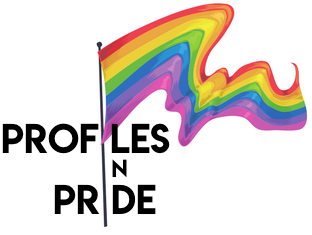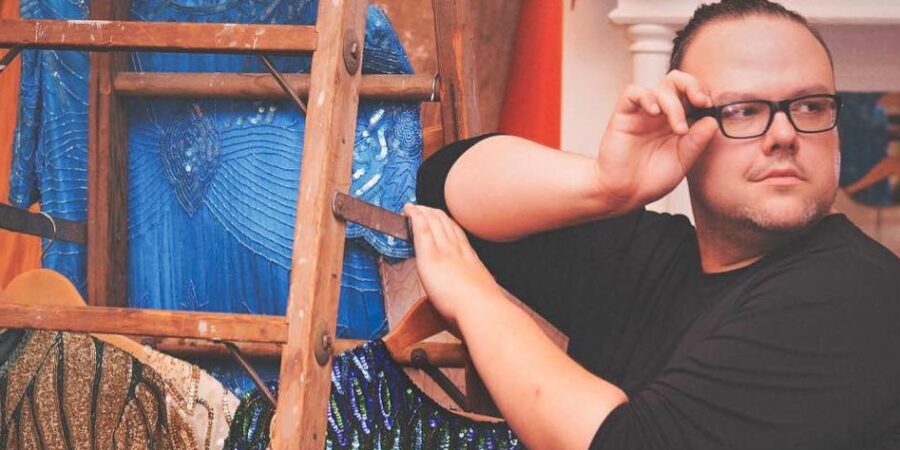Like many people in the LGBTQIA community, Derick Stevens-Jones’ coming out happened in phases.
Growing up in Louisiana in the ‘90s, they always knew they were a little different. They came out as gay at 16, since that was the best way they knew how to describe themselves. While their mother was supportive, their father wasn’t on board and later sent them to conversion therapy.
Stevens-Jones moved to south Louisiana to escape their hometown, but eventually returned to finish a degree in journalism and build a successful writing career. They became a public media figure in the Shreveport area as an out gay man and started dating their partner Evan, who identifies as nonbinary. The pair purchased a resale thrift and vintage store in their neighborhood and were pleasantly surprised when it became a go-to safe space for local LGBTQIA youth.
Being with someone who was also discovering their nonbinary/genderqueer identity opened up a whole new paradigm for Stevens-Jones. Yearning for a change and adventure, Stevens-Jones and their partner moved to New Mexico in 2016. While there, away from familiar people and places, Stevens-Jones came to realize they were nonbinary. They returned home with this new identity. While it wasn’t supported by everyone in their life, it gave them a renewed passion for supporting LGBTQIA people, especially since the South can be a hostile environment for the community. They eventually left journalism to pursue their vintage business and freelance social media business.
Before coming out as nonbinary, Stevens-Jones tried to put together a queer-ish music festival, but it never came to fruition. In New Mexico, they saw a local LGBTQ+ community resource center and wanted to create something similar for Shreveport but focus on the creative arts. Knowing that raising funding for this could take years, they decided to start small.
With the help of their partner, friends, and activists, Stevens-Jones launched a movement called Queerport, which will soon be a nonprofit. The flagship component is an annual event in June also called Queerport, which celebrates the community and its creative art (but is specifically not a typical “Pride” event). Queerport is 100% run and organized by LGBTQIA people. The organization also hosts smaller monthly events in the Shreveport area for specific identities within the community, such as transgender or asexual/aromantic.
Another key part of the initiative is Queerport.org, an online platform for local creatives in the queer community to share their craft, whether it be writing, photography, art, video, or something else. Stevens-Jones, who is 33, noticed there are many queer youth in the area but few resources for them, so he ensures that website submissions and many Queerport events are open to the under-21 crowd.
Read on to learn how Stevens-Jones dealt with growing up and coming out in the South, why they embrace the word “queer,” how they learned to use their privilege for good, and what drives them to grow the Queerport movement.
Profiles in Pride: What was it like growing up and coming out in Louisiana, which is known to be quite a conservative state?
Derick Stevens-Jones: I’ve known that I was different from everyone since I was five or six years old. Growing up in the South is very difficult for a lot of different reasons. Being gay in the South was not fun or easy. It’s not celebrated.
I had my first kiss with a boy when I was 10 years old, and I had my first sexual experience when I was 13 with a boy. I came out as gay when I was 16 years old, around 2003. For me, it was easiest to come out as gay, because that was the only term I knew to call myself. I knew that I did not like cis women, but at the same time, I knew that I wasn’t afraid to date other people. I didn’t know any transgender or nonbinary people at the time, or if I did, nobody was talking about it.
I didn’t have a terrible coming out experience. My parents are religious, Southern Baptists, racist, Republican — all the things that would say this isn’t going to work when you come out. I told my mom first, and she had concerns as a mother, but there was never any judgment from her. There was never any sort of ultimatum or making me feel bad. My mom always welcomed me with open arms.
My dad was a different story. I knew I couldn’t come out to them both at the same time. I just couldn’t mentally do that. I started with my mom, and she promised me she wouldn’t tell my dad because that was something I needed to tell him. My mom has always been respectful, and she understood that was my story to tell.

I tried for an entire year to figure out how to tell my dad, and I would try to leave notes or hints. I just didn’t want to have to say it to him. When I did come out to my dad, he didn’t kick me out of the house or anything, but I was emotionally berated and I did not feel like I was welcome in that house anymore.
I decided that I needed to go stay with someone for a little while. Not so much for security reasons — I’m an only child, and I’m also adopted, and I never felt like my life was threatened. My dad is not a physical person, but he has a mouth on him! He’s not afraid to be verbal about his feelings sometimes, especially when he doesn’t understand something.
At one point when I was 18 or 19, I was going to therapy and my dad decided he wanted to come to a session with me. I said that’s fine, but we’re gonna be talking about a lot of personal stuff. When he got there he made a complete ass of himself in front of my therapist. I was still a dependent on my dad’s insurance, and afterward he said the only way he’d let me go to a therapist again was if he picked them. I was young, so I wasn’t really aware of things. And my dad sent me to conversion therapy.
I went to one session and realized that’s what it was. Mind you, it was at a church. While I’m not religious now, at that point I still had some kind of faith and I was open to the idea of going to a church. It didn’t connect with me that the church would say who I was was wrong. I was very naive to a lot of things. I think that type of upbringing is very common in the South. I’ve met tons of people who’ve gone through similar situations.
I’ve since salvaged my relationship with my father. Our relationship is different these days. My parents are much older; my dad is 76 and my mom is 74. My mom has Parkinson’s Disease and my dad is doing his best to be her caretaker right now, but we’ve kind of gotten to a point now where we just focus on my mom and we don’t really discuss my life anymore. It’s fine.
PIP: What was it like coming out as nonbinary years later?
DSJ: Coming out as nonbinary is something completely different because I get to do that every fucking day! I didn’t know what that word meant until I met my partner. I wouldn’t say I was completely ignorant about gender identity, but it was seeing these words for the first time and being like, is that me? Does that actually mean who I am?
And feeling comfortable enough to even have a conversation with your partner about it and say, “What does this mean for the old me, who everyone has known for so long as a journalist and a public media figure?” My face has literally been on billboards. Who am I now and how do I deal with this process of coming out all the time?
It was a slow start. Around late 2015, we decided to move to New Mexico for multiple reasons. My partner had never been past Dallas, so we wanted adventure and travel; they were never afforded that, and I wanted to give that to them. So we took an online quiz and landed in Albuquerque, New Mexico in March 2016.

While I was out there in New Mexico, it was the first time that nobody knew who I was. It was the first time that I could walk out my door and be the person I always felt and wanted to be. I didn’t have anyone questioning that, because it was their first time meeting me. It was the most liberating feeling I’d ever had. I realized that this is who I am, and I came out on Facebook.
Most of my friends responded well, but when I came back home, it was a different story. I don’t think they responded negatively, but I noticed that there wasn’t a feeling of wanting to try for me. I’d catch myself hearing people who knew I was nonbinary and trying to use they/them pronouns and would still refer to me as he or sir. It kept happening. I can only correct people so many times before I don’t care anymore. Of course that causes dysphoria and all the stuff that comes with it.
When I got back here to Shreveport in 2017, I kind of laid low for a bit. I didn’t press hard with people or talk about things that were important to me anymore. It wasn’t because I felt defeated; it was because I had to figure out a new way to approach it. I figure if people aren’t going to listen to one voice, maybe they’ll listen to a whole bunch of voices. This leads into how Queerport began!
PIP: Yes, please tell us how you started Queerport!
DSJ: First off, I didn’t start Queerport. It’s always been here, I just decided to make it be known. Backtrack to 2013 when we first opened our store. We lived in a neighborhood where there was a thrift store two blocks away from us, and we used to go all the time. The woman who owned the store was moving away and was going to close her shop. I’d worked in retail part-time in high school and college. I have just as strong a background in it as journalism! I didn’t want to see it go, so I bought it from her.
It was the worst and best decision I’ve probably ever made. I created my brand, and it put me in a little debt that I’m finally out of now. We had a month to get shit transformed and together. It was a damn miracle — a Christmas miracle! A big part of the reason why I bought it was because I didn’t want it to close, but I also wanted to give my partner something to be excited about. I didn’t know this at the time, but my partner was going through severe bouts of depression and anxiety. Looking back, I think we bought it during a manic period. But I’m very happy and my partner is very happy and super supportive. We’ve gotten to a better place. We’ve been together now for seven years.
In 2014, we wanted to come up with a music festival. I wanted to do something highlighting queer people, feminism, body positivity — everything that made me a person. I had meetings with a few people, but it never got off the ground. We even made a zine for it and we were pumped, but it was just never the right time with the right people.
Over the years I’ve had numerous iterations of what Queerport is today. It started as a music festival, at one point it was gonna be a queer fashion show, and at one point a queer art collective, but it never felt right. When I got back from New Mexico, I had this brand new idea.
I met with a friend and my partner, and we talked about the idea of how we could get an LGBTQIA+ arts and resource center in our city. That’s really what I wanted to do. When I was in New Mexico they had one and I was like, “I’m stealing you and bringing you here!” Their focus was on literacy and I really liked that, but I wanted to focus on the creative arts as a whole. I’m all about small business owners, entrepreneurs, creatives, creative stuff, selling stuff, and people getting paid. I want people to succeed, and I want to be surrounded with people like me who are doing cool stuff.
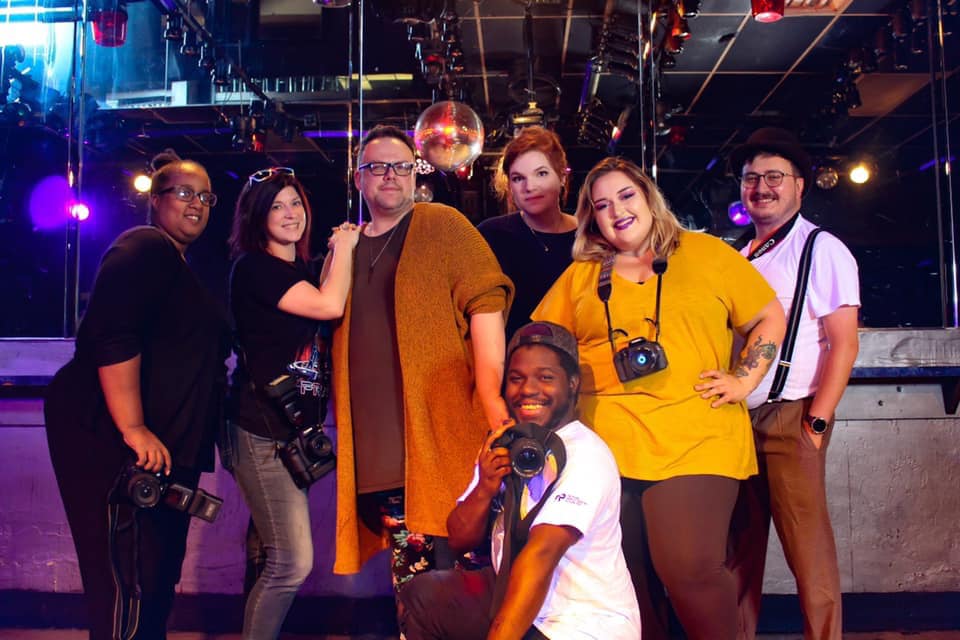
We didn’t know what to call it, but it needed a name. I think it was my partner Evan is who came up with the idea of calling it Queerport, clearly a fusion of “Queer” and “Shreveport.” There’s a few hashtags around here including #dreamport and #shreveportant that a lot of folks use when they’re excited about something in the community, so we wanted something specific to us that people could use too. We wanted something that was so queer that nobody could steal it or hashtag it without being either comfortable using it. We wanted it to be in your face and stand out. We settled on Queerport, and from that point moving forward, I had to think, what are we doing for this?
If we’re fundraising for an art and resource center, it’s not happening this year or next year. We need to beef up what we’re doing, and that’s when we decided we’d create a blog and platform online for queer creatives to write, submit poems, graphics, video, whatever they wanted to do, and we’d host it on our website.
We wanted it to be a true collective of queer people in the Shreveport area and other nearby cities. We knew if we focused just on Shreveport it would take forever, so we brought in other cities like Longview, Texarkana, Monroe; we’re the biggest city in the area, so people come here all the time, and we need to make sure those people get their stories heard, too.
I’ve never been a big historian, but this has made me one. I’m so interested in history now and learning about the queer culture in our city. We’ve had a gay bar here that’s been open since 1933! There are so many beautiful, cool things, but not a lot of documentation of it. I’ve got to make sure we’re documenting what’s happening now.
We made the promise for 2020 to hold at least one event each month. Everything launched in June of last year, and we had a huge celebration of true diversity. It was in Pride Month for a reason. We had a huge festival, and there were probably 200 or more people who came out for it. It was wild! We never expected it.
We had musicians and creatives that were working on stuff there like live demos. We had an art marketplace where people were selling paintings and keychains and crafts. There were nonprofits there. We had a gallery with art, poetry, drag queens, workshops — it was so cool. When I was 16, I would never have dreamed that I’d be doing something like this.
When that ended, and the response to it was incredible, and we were like, “Why was this so successful?” It was because it was all ages and free. At that point, we really hadn’t even considered what it really meant to be a youth in the city and an LGBTQ youth at that. When we’re doing our programming now, we’re trying to do it 50/50 so we’re providing at least 50% of content for people under 21 and 50% for everyone else. It’s also important to provide events where alcohol is not the main attraction, or outside of a bar that’s not filled with smoke.
Right now we’re doing a photo project called We are the Future. It’s a portrait-style series. We’re doing multiple sessions; we’re having people who are under 25 come by to have their portrait taken, and we’re going to turn that into a mural that will be used at our big Queerport event in June. We wanted to do something to showcase our younger demographic.
We’re also using this photo project as a way for youth to have a safe space for a few hours to hang out with other people. We’re getting something out of it, but they’re getting something out of it, too. The first one didn’t have a big turnout, maybe a handful, but people came. We had one kid that walked 4.7 miles to get there.
Queerport will now be an annual festival. After taking a look at what will work best, the goal is to take everything online and in person from the year we’ve had (June to May) and use that as material for our main event for Queerport. For all the people who have submitted poetry, we’ll have a wall of poems. For all people who have submitted art, we’ll get it framed and we’ll hang it in the gallery. We’ll take care of all of it for them because we’re doing fundraising right now.
I don’t have any money, I’m very broke. I’m a millennial, we ain’t got nothing! I don’t come from a trust fund, but I’m hoping this is how our allies will start helping. Put your money where your mouth is — support your local queer community!
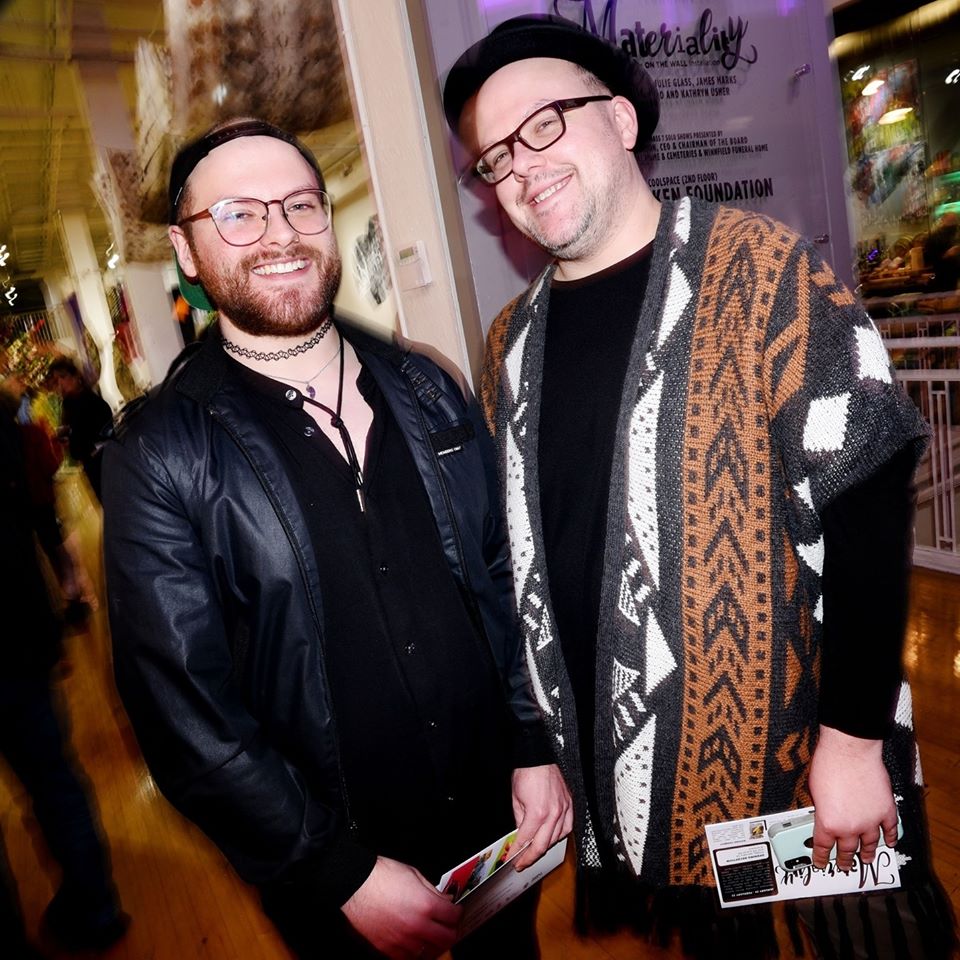
PIP: Do you find people are surprised that a queer community exists in a place like Shreveport?
DSJ: Yes, and there have been a lot of changes that have taken place in the last 10 years that have given us more resources and outlets.
Here in my town, there are three LGBTQ spaces. Two are bars, both 21+ spaces. Those are our two places to go to “meet other people.” Obviously you can get on Tinder, Grindr, or whatever you need to find other people online. But of course that’s not always the best option to meet people. Minicine?, where we held our big Queerport event, is an underground/urban/DIY space that is a safe space for queer people. It’s not specifically queer, but it’s defintely a haven.
Then thinking about the LGBTQ+ events that had been held here, they’re mostly targeted to cis white gays. So the question was, how do we meet others in an intersectional way that also provides a safe space for young people?
At the time in 2012, maybe 2013, there were only one or two events that happened in our city that were for LGBTQ people of all ages. That wasn’t enough. I also saw a disconnect from people here who are part of some LGBTQ groups where they don’t really think about the community. Almost every time, our youth is excluded. If vendors are involved, spaces usually fill fast with folks who are cis het allies. I have learned that curation is key for many of these events to ensure you get the best representation, otherwise our spaces are taken over yet again by people who aren’t us.
At Queerport we have very strict rules and standards on how and where we have events. We consider ourselves to be pretty radical and we do not want to give money to people who do not support us. In turn, we don’t want to accept money from those people either. We do not want to book rentals at buildings that are owned by people who actively vote against us. And that’s very limiting here; there’s a handful of things working for us.
That is why the need for this building and space and what we’re trying to create is imperative. We are a queer-lead organization for queer people. We also don’t believe in censorship. When it comes to our blog, anyone can write and talk about what they want. As a journalist, I’ve been censored for a really long time, and we have to when we’re working for another entity. We may be the voice, but it’s never our opinion.
I don’t want to limit anyone on what they’re talking about. If you’re 16 years old and you want to write something for our blog and it’s a sexual experience, I don’t have a problem with that. If someone came to me and wanted to talk to me about that, I’m not a therapist, but if that’s what you want to write about it and submit it and that’s your way of staying alive and coping with it, I’m not going to stop you. And if someone did need to speak with someone, we do have resources to connect with the right person(s).
When I first opened my store, that was the first time I really started interacting with young people and young queer people. Most of my friends were my age; I didn’t know 16- or 17-year-olds. But they started shopping at my store and I started having relationships with a lot of these people, and it was the first time young people looked up to me as a mentor. I didn’t know how to deal with that; I’m not that type of person.
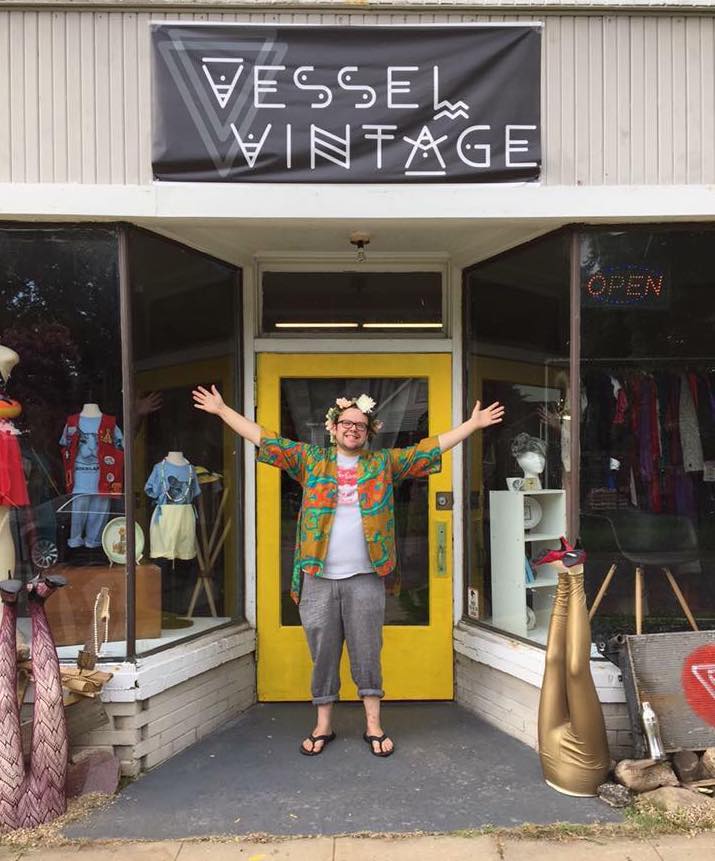
At least, I’ve never felt like that type of person for someone, so that was a big catalyst for me being like, What about my shoppers? What about Jacob and Rose and these people who have come to me because my store is a safe space? And I’m only open 10-6 from Monday through Friday; how do I make this last longer?
At that time I had no concept; we were trying to do this music festival, though as a one-off. It wasn’t a movement. That’s something I’ve tried to explain to people since Queerport started. Everyone thought we were just a one-off event. I was like, no, we’re a movement! And the movement is going to continue happening! It may not be as big and bold and bright as this one, but it’s going to continue happening and you’re going to see our name more and more out there. Eventually when people start referring to what’s going on in the queer community here, people out here are going to refer to Queerport.
PIP: Have you found that people have issues with the word queer there?
DSJ: Yes and no. With some it’s been a real struggle getting people on board with that word. I choose the word queer because I wanted it to be branded that way. For those of us who started it, we use it as an identifier for who we are. But I know many people don’t associate it as positive.
PIP: I get it; it was a bad word when I was growing up. I embrace it now, but it took me a while to come around to it.
DSJ: Me too; that was a word people called me, like fag. I eventually realized this is really the best word that encompasses who I am as far as my sexuality, my gender, and my appearance. I don’t feel like I’m gay, I’m not lesbian, I’m not bisexual. It’s debatable if being nonbinary falls under the trans umbrella; I consider it part of it, but some don’t — everyone has their personal space and beliefs. I didn’t want to call myself trans, because I didn’t feel like I was. Queer was the only word that really made sense to me.
Having “queer” in the name of our organization helps weed out the people who are not as progressive as we need them to be, and that’s important to know. We are an investment in our community. Queer is a beautiful word.
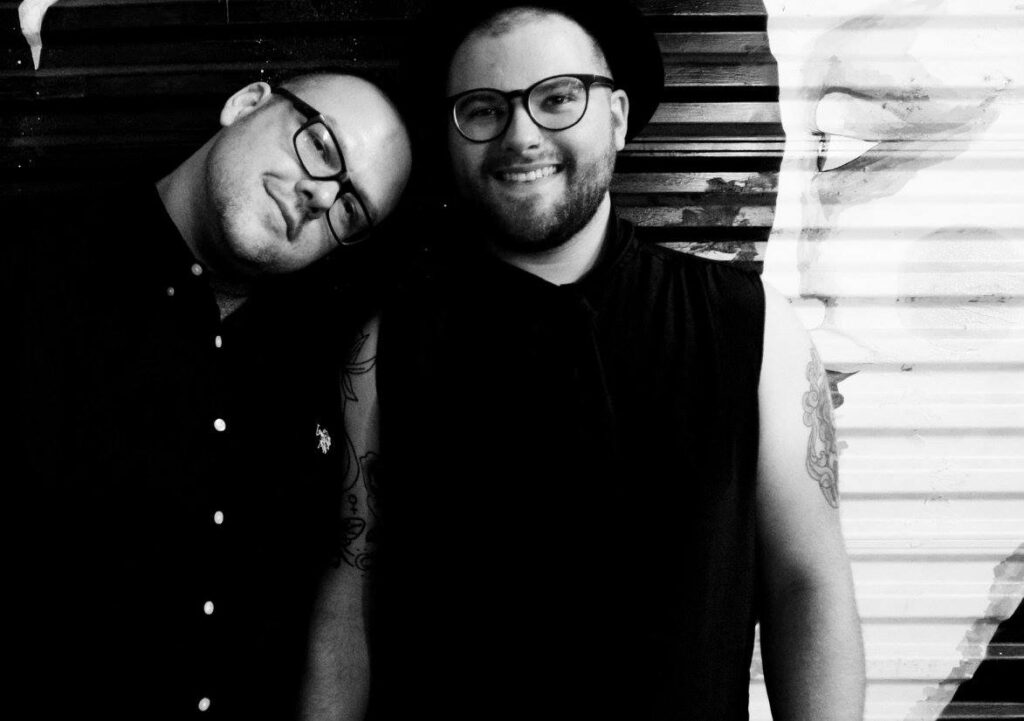
PIP: I get what you mean. I have a shirt from TomboyX that says, “Queer love is a radical act.” I think people who embrace that word seem to have a more radical view.
DSJ: There’s a major divide between the LGB(sometimes)T and queer. What I’m saying is that I’ve met LGBT conservative people who are transphobic as fuck. Or who deny my gender. Or, gasp, who support Trump!
Let’s get one thing straight. We are not here for that. I try to be this moral guiding point, and I know who we are and I know that we are trying to be this voice for all these different types of people, but I’m not going to allow someone who’s a gay conservative to write a story about Trump for our blog. I’m not going to do that. I’m not going to give a platform that does not stand for that at all, just for the sake of “because I’m gay.” No! Queerport is about an uprising of radical queerness in our city. If you don’t fit that bill, you can see the door.
I have learned over the years that I have three privileges: I’m white, I present as a male (generally), and my parents were financially stable. I didn’t understand I had these privileges until these last few years, but I do. I’m not a superhero, but I’m going to use this “power” in my community for good. You’ve respected me for all of these years before as a media professional, a journalist, and a man, so respect me now.
I’m going to use that to my advantage, because if you’re not going to listen to the transgender black woman who is stating the same fucking things I am, or you’re not going to listen to this nonbinary Latinx woman who’s passionate about her story, maybe you’ll listen to me. Because you listened to me for so long before.
I didn’t think about that. I didn’t think I had a voice or opinion that mattered. It wasn’t until I came out as nonbinary and I was like, maybe people will actually listen to me because I look like someone they’re not afraid of. And how can I make that work in our favor? Not just my favor, but our favor? And how can I make that really work for us?
I’m very vocal now. I don’t hide things anymore, I talk about things in public forums. I will literally get into a gender discussion with people at Taco Bell now. I don’t care! Because for me, it’s worth it to be able to have a conversation like this and not be afraid to correct someone or advise someone. There’s so many people who don’t ever get that opportunity to talk about it or help someone be aware about things.
I’m just going to be loud. So be it! Someone called me the mayor of the drag queens once because in my free time, which I don’t really have free time, I’m a big drag supporter and film their shows. I’m just trying to make things happen here.
PIP: I love it. When did you first get interested in drag?
DSJ: I first went to a gay bar when I was 18 or 19 years old and saw my very first drag show. I was scared, to be honest. It wasn’t attractive or cool to me at the time. I didn’t want to be seen as any more gay than I already was. I had no pride or sense of self.
Now I go to the performances and I film the queens and kings. We have two dedicated spaces where drag entertainers perform weekly and we have drag bingos and brunches. We’ve had so many new performers pop up in the last year, they need more spaces to create their art.
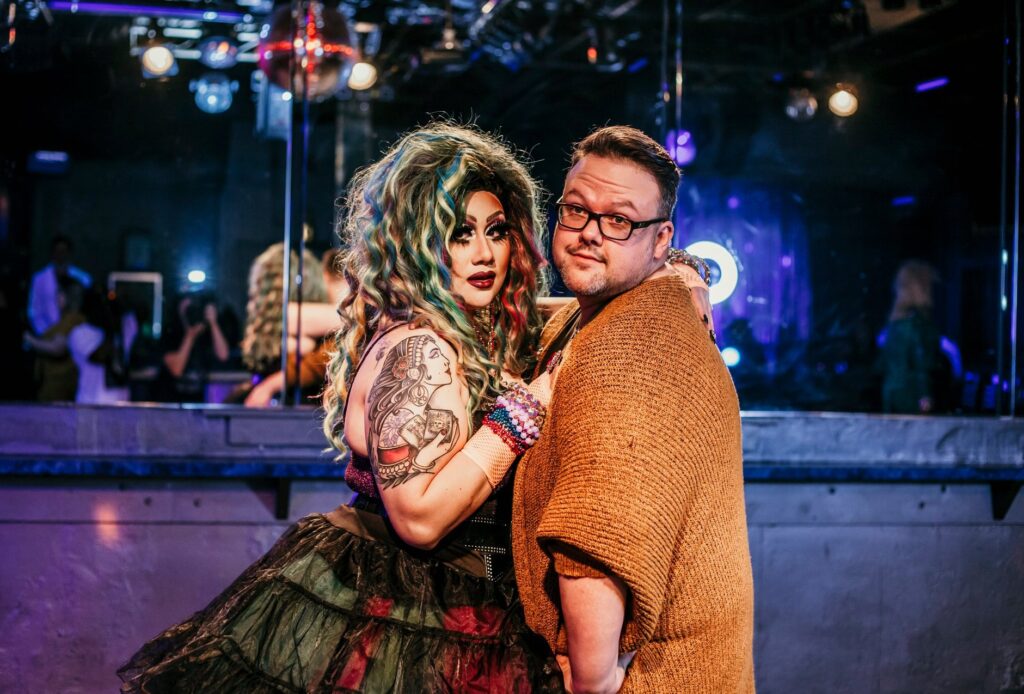
And I don’t mean three — over the last year we’ve had 10+ drag artists emerge. It’s all young people between 21-26. It’s incredible, because for so many years we have the same performers and only one place to see their shows. Now there’s a renaissance of drag happening here. I’m a huge supporter of the newer performers. Many of them are people who started shopping with me in the beginning, so I’m very connected to them and love to support them.
We even have someone who’s a Muslim drag queen in the South! In Shreveport! She’s very off the wall and probably the only Muslim queen in a 300-mile radius. She dresses modestly (usually), and her name is Lemon Pop. She’s a huge activist. We have an abortion clinic here called The Hope Clinic and she did a fundraiser at a bar in drag for them. There were protestors, it was incredible. I live for moments like that.
PIP: That’s amazing to know that Shreveport isn’t as conservative as I thought! I love hearing that there’s more of a queer community and resources for LGBTQIA+ people that one would expect.
DSJ: It’s intimidating, because again, when you go to look for queer or LGBTQ Shreveport, there’s not a lot of good information out there. From the outsider point of view, if you weren’t connected, if you hadn’t talked to me and just stepped foot here, you’d 100% think it’s conservative and you’d think this was probably the most back-assward city you’d been in a while. To be honest, you probably wouldn’t be too far off from that. But there are pockets of us, there are people who are really working hard.
These are all the things we have available now: we have Pride in the Park that happens in April, we have our organization with monthly events and our main event in June, we have a QProm that happens in June. We have an organization here called PACE, People Acting for Change and Equality. We have a PFLAG chapter here, and PACEY, which is the youth group for PACE. We have the North Louisiana Gay and Lesbian Festival; I hate the name but it’s been that for 10 years. These past three years have just been major game changers here. Stuff is happening, and fast.
Like with Queerport, we’re doing a monthly movie viewing at one of the local bars. We’re doing a series of mixers/meetups at a local restaurant for trans, ace/aros/enbies, QPOC+ and differently abled. That’s a big thing about Queerport, we’ve got to make sure all parties are represented. If we can do our best to do that, the people who are discovering us for the first time online and see us, and are like whoa, you’re having an event for asexual people? What the fuck, that’s unheard of!
I can’t wait to see what the next few years hold for us. Our goal is to have our arts and resource center by 2025. That’s what this is all about. We’ve started entertaining the idea of looking at spaces just to get an idea of what we want or need. Maybe a house in Highland? Something in downtown Shreveport? It needs to be accessible for all, and we know it’s going to happen. We will one day open Shreveport’s first LGBTQIA+ Arts & Resource Center and people are going to shit themselves.
Keep up with Queerport on Instagram @Queerport.
